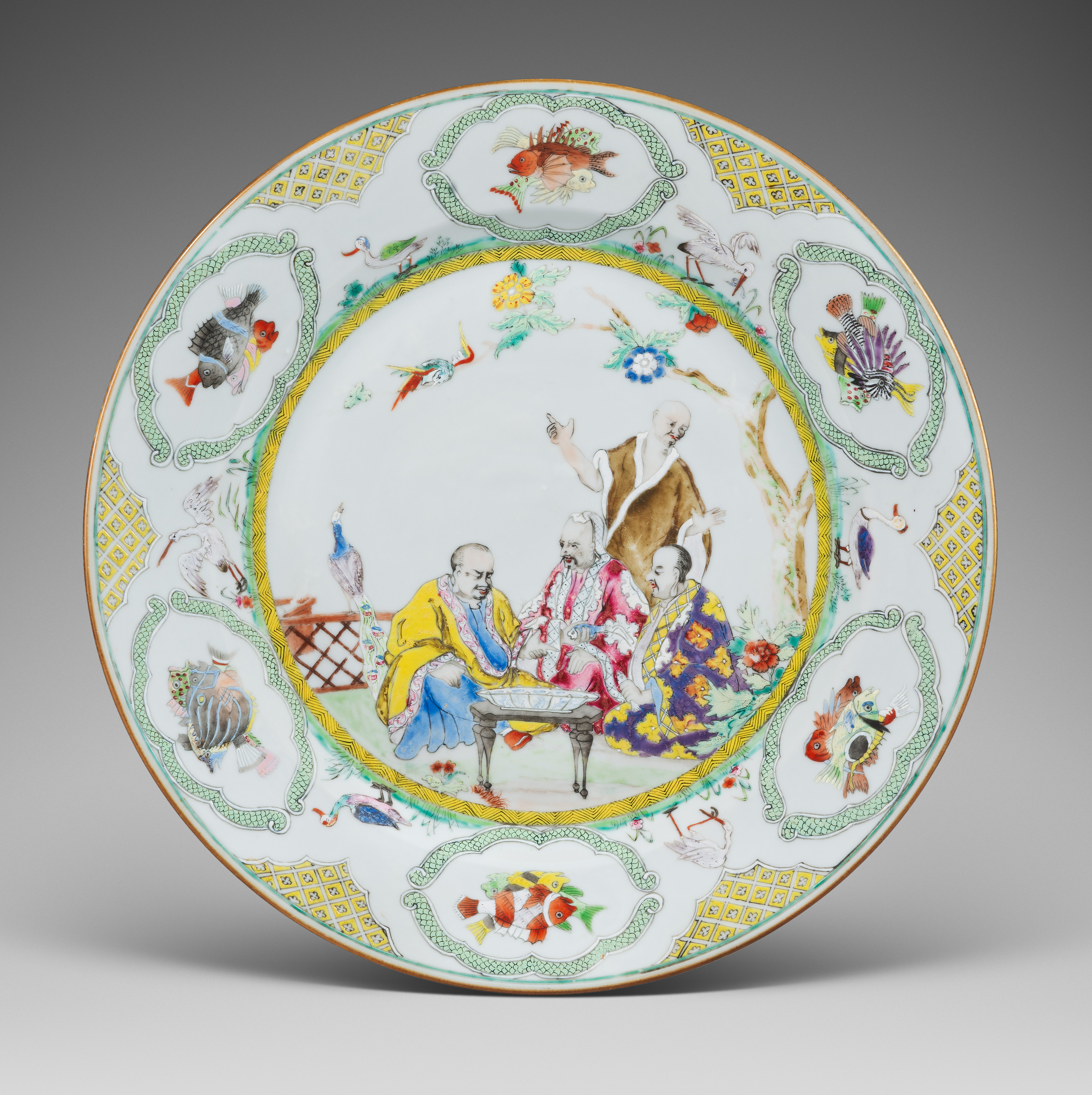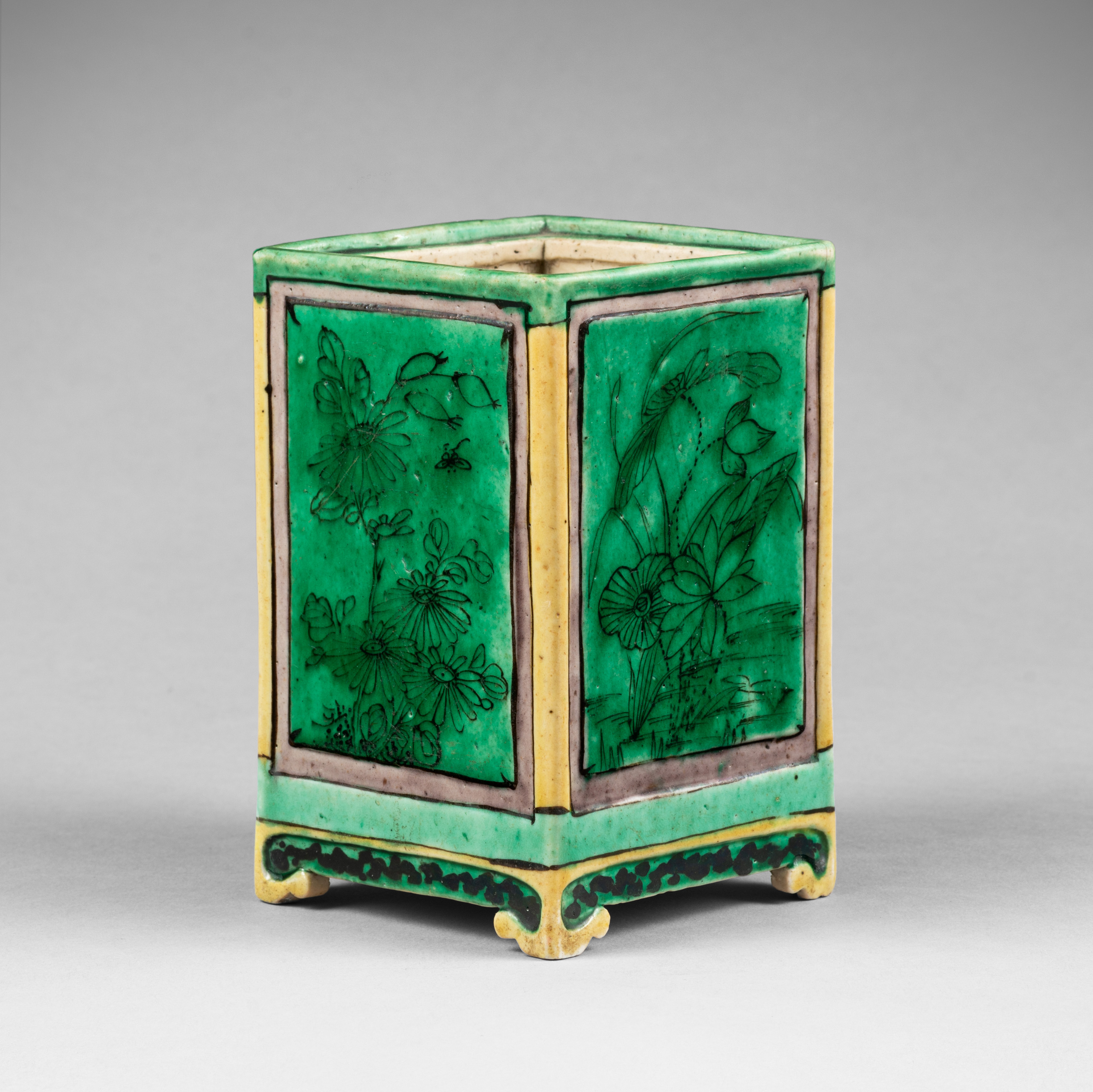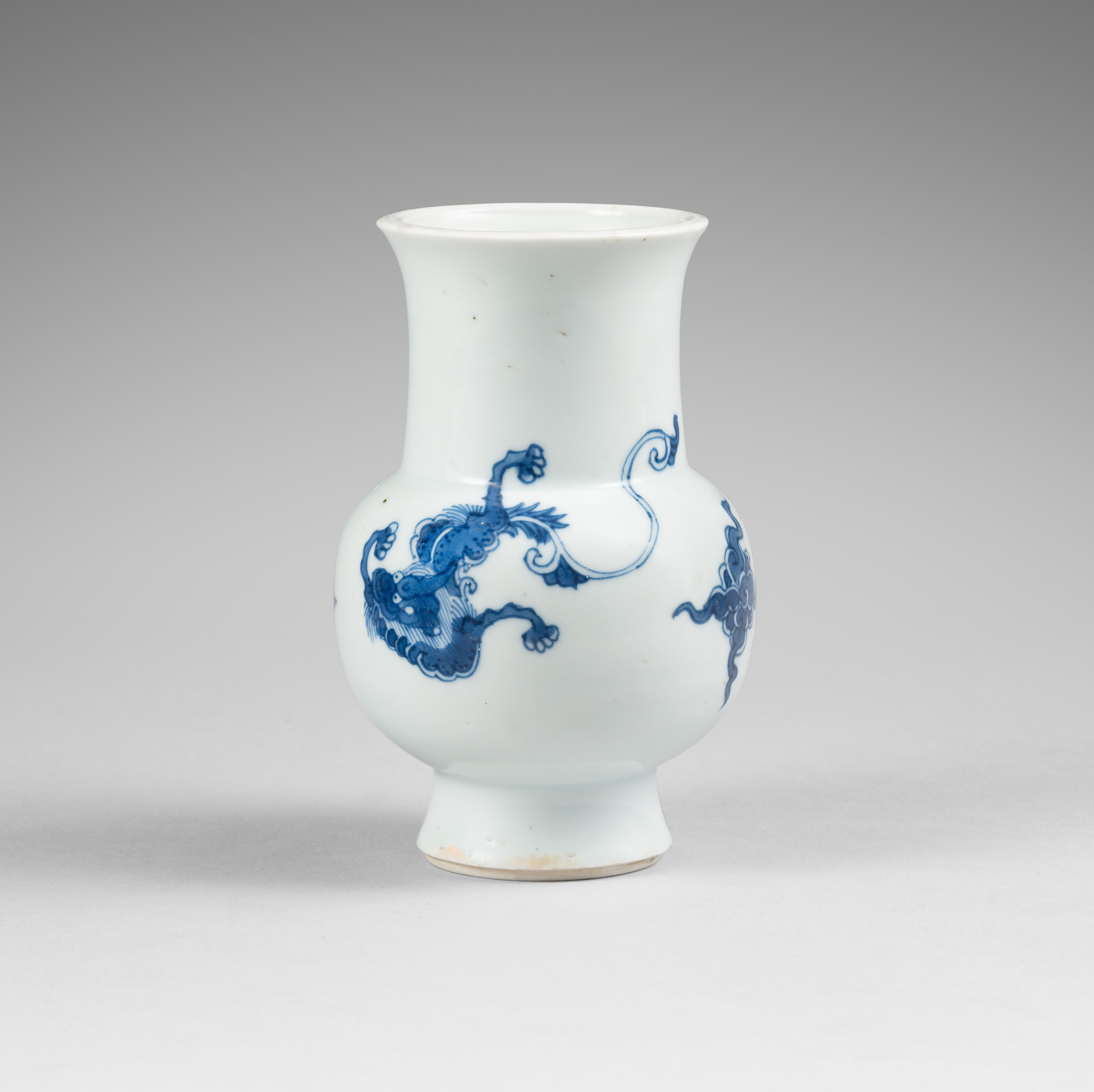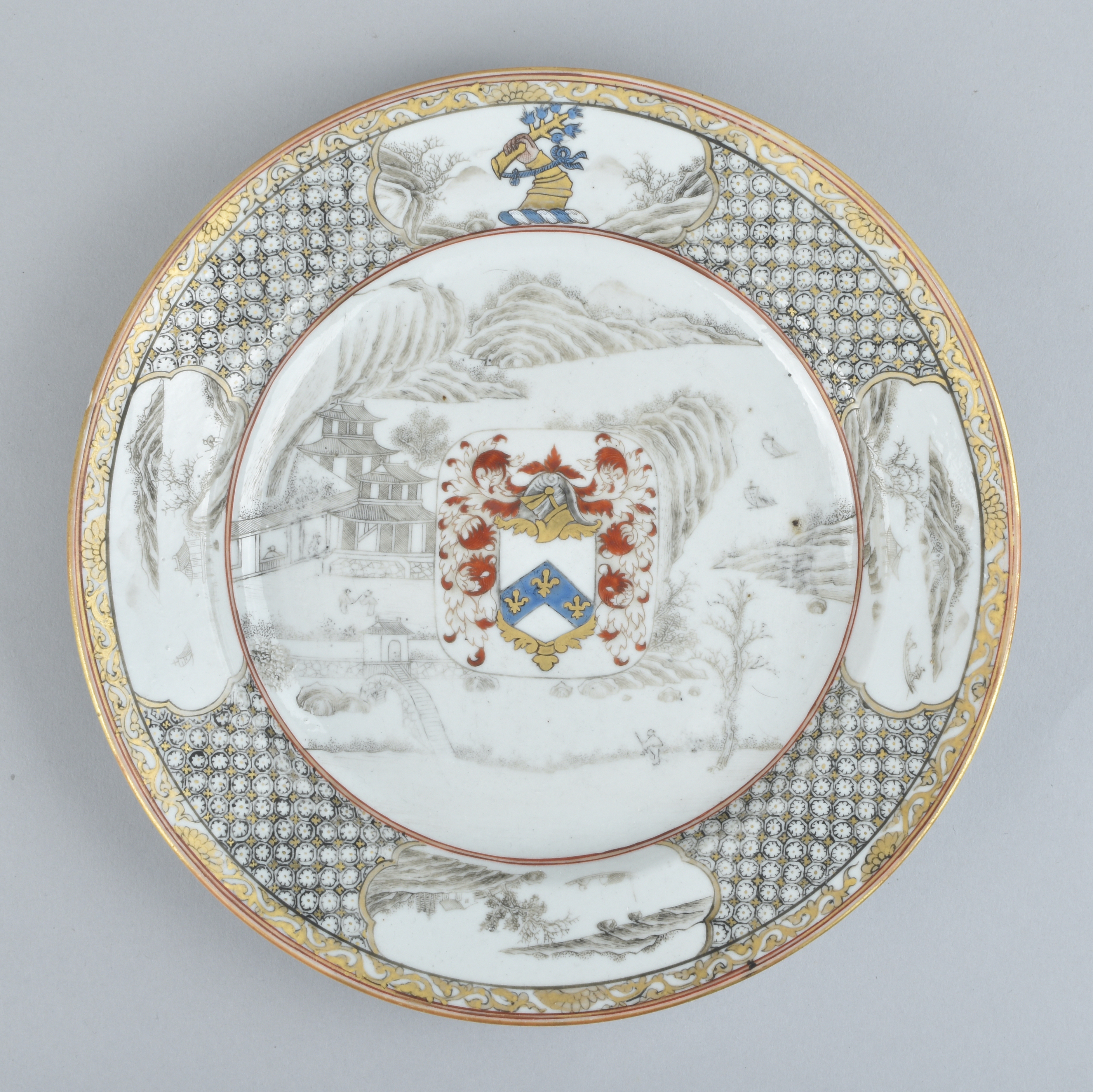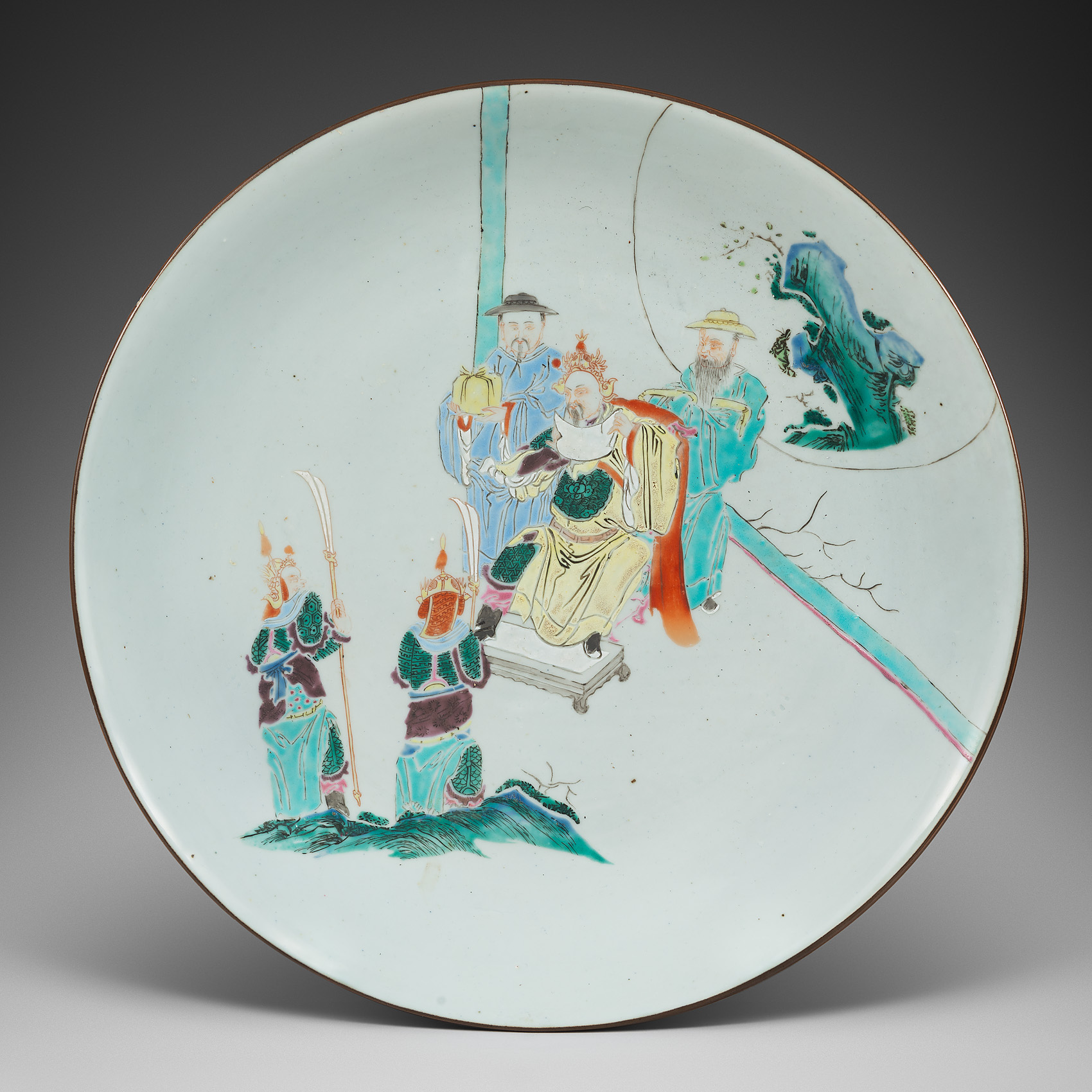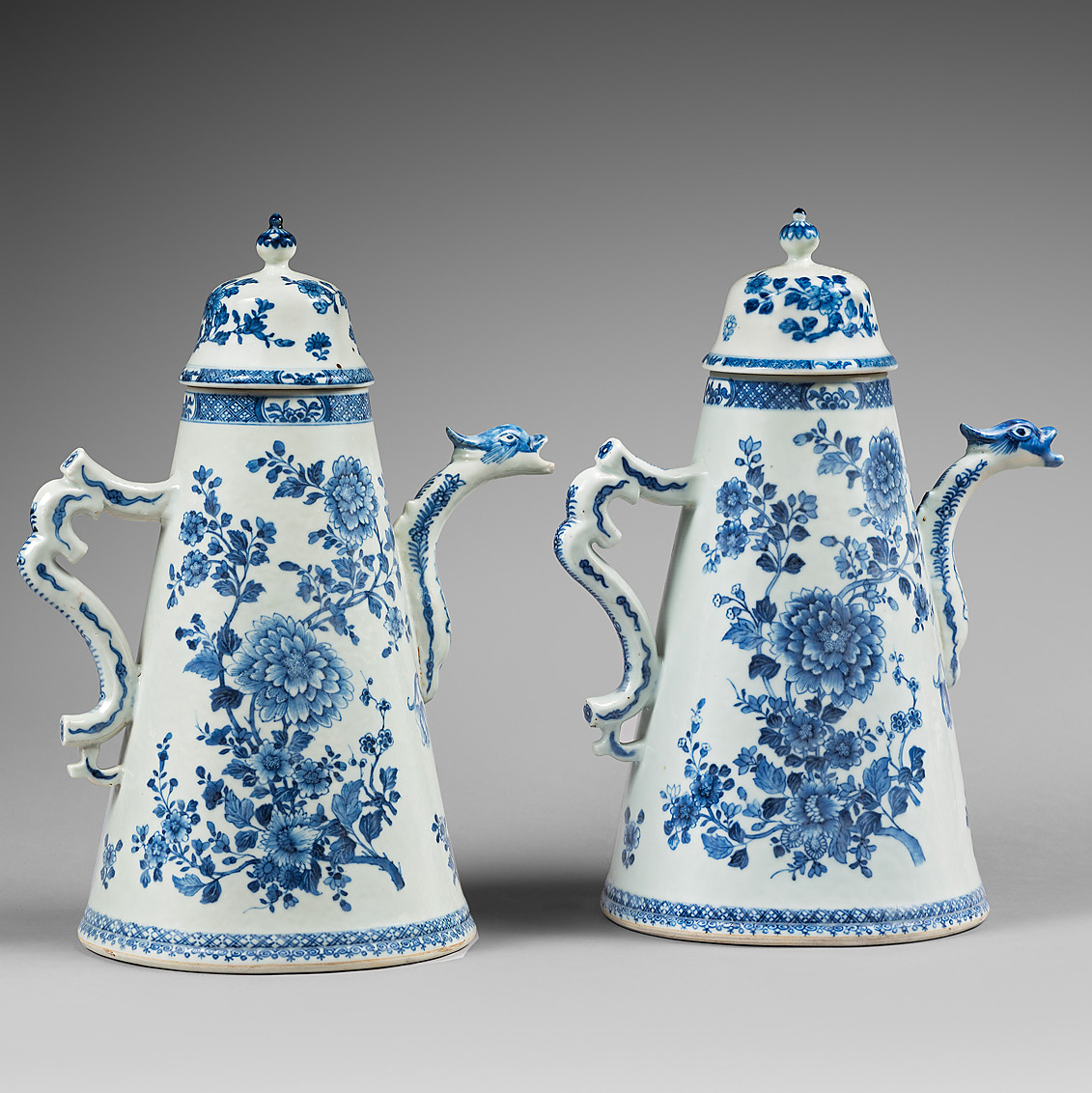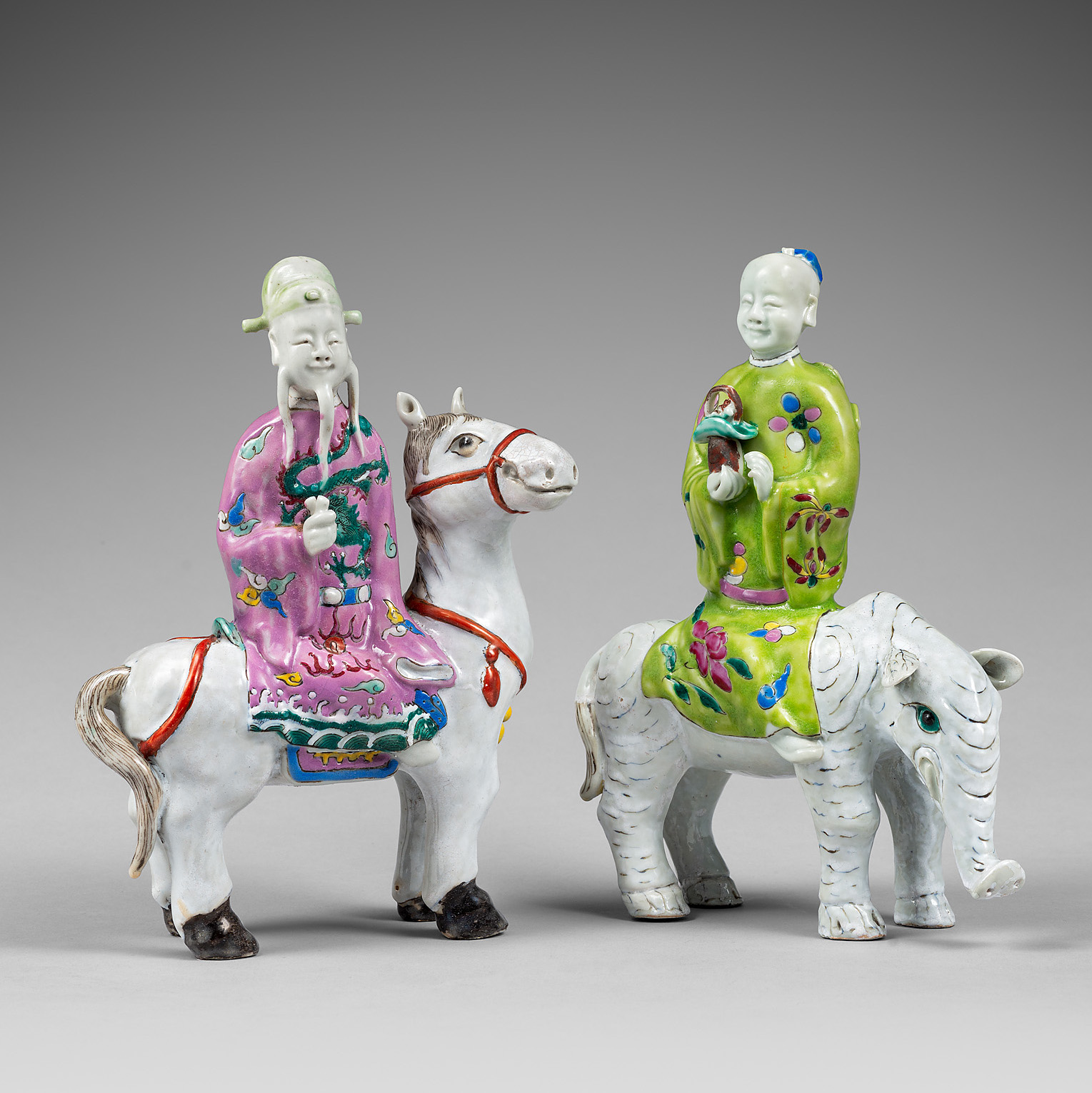
Two large famille rose figures of immortals riding mythical beasts. Qianlong
The two large figures depict two immortals riding riding mythical beasts ; Cao Guojiu with castanets on a white horse, and Lan Caihe with a floral basket on a white elephant.
- Country:
- China
- Period :
- Qianlong (1736-1795)
- Material:
- Porcelain
- Dimension:
- 8.26 in. (21 cm)
- Reference :
- E070
- Status:
- sold
Related works
For two immortals of the same model (but with different figures), see Christie’s NY, The Tibor Collection: A Noble Eye for Chinese Export, 2019.
Rosalie Wise Sharp, Ceramics, Ethics & Scandal, p. 210 ( for a complete set).
William R. Sargent, Chinese Porcelain in the Conde Collection, Madrid, 2014, pp. 170-171 for some examples.
Notice
The Eight Immortals are a group of legendary xian (“immortals”) in Chinese mythology. Each immortal’s power can be transferred to a power tool that can bestow life or destroy evil. Together, these eight tools are called the “Covert Eight Immortals“. Most of them are said to have been born in the Tang or Song dynasty. They are revered by the Taoist and are also a popular element in the secular Chinese culture. They are said to live on a group of five islands in the Bohai Sea, which includes Penglai Mountain-Island.
Cao Guojiu is believed to be a descendant of Cao Bin, a general of the early Song dynasty, and a younger brother of Empress Cao, the wife of Emperor Renzong of the Song dynasty. As none of Emperor Renzong’s sons survived their father, the emperor designated a younger male relative, who later became Emperor Singsong, as his successor. As such, Cao could not have been a maternal uncle of Emperor Yingzong, so his “Imperial Uncle” status seemed ambiguous. However, as the Chinese character jiu (舅), which means “maternal uncle”, can also mean “wife’s brother”, it is believed that the latter meaning should apply to Cao. In other words, Cao was the “Imperial Brother-in-Law” of Emperor Renzong rather than an “Imperial (Maternal) Uncle” of any Song dynasty emperor.
Lan Caihe is another figure of the Eight immortals. Presence in the Eight makes this figure one of the more familiar out of hundreds of other taoist immortals. Lan Caihe is the only one of the Eight Immortals whose gender is ambiguous. Lan is not generally thought to be based on a historical person, but is traditionally said to have been born sometime during the Tang dynasty (618 to 907 CE), and lived as a homeless street entertainer who wandered all over China, singing philosophical songs. Stories vary about how Lan attained immortality and became one of the Eight Immortals. Lan’s emblem is a basket of flowers, and so this immortal is considered the patron of florists and gardeners.




















